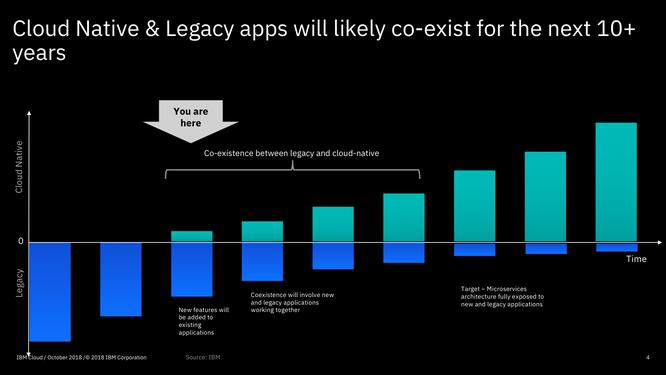Dive Brief:
Dive Insight:
The costs to companies from missteps in cloud transitions may grow with the rapid pace of cloud adoption.
Worldwide spending on public cloud services will surge 20% this year to $495 billion and 21% next year to $600 billion, according to Gartner. Cloud application services is the biggest segment, with total outlays likely to hit a record $110 billion this year and $136 billion in 2023.
McKinsey identified six “persistent and pernicious” mistakes in cloud adoption:
1/ Rushing to “Day One” benefits
Taking a “lift and shift” approach to moving applications to the cloud, companies yield quick gains from reduced hosting, storage and maintenance costs, McKinsey said.
Yet companies that rush the transition and fail to plan for subsequent months retain many of the technical and operational inefficiencies of the migrated applications and forgo the advantages from the cloud’s flexible infrastructure.
The companies fail to fully gain from the “Year One” advantages of speed to market and access to advanced capabilities. Year One benefits often exceed Day One benefits by 15% to 25%, McKinsey said.
2/ Failing to shift away from a capital expenditure approach
Cloud adoption recasts a company’s IT cost structure. Technology spending that was once an on-site capital expenditure becomes an operational expenditure in which companies pay for what they consume.

Some companies fail to adopt a “dynamic operating-expenditure approach” in which they precisely measure demand, McKinsey said.
“The most efficient cloud economics now hinge on the ability to effectively evaluate capacity demand — and the corresponding incremental or marginal costs — at any given moment,” McKinsey said. “This is about paying for capacity only when you need it, rather than paying for capacity you don’t use.”
3/ Forecasting cloud spending without a focus on company priorities
When moving to an operational expenditure approach, companies often rely on past patterns as they budget for future spending, McKinsey said. Yet “history becomes a much less reliable predictor of the future,” and company estimates often miss the mark on actual spending by more than 20%.
Businesses need to tie their spending plans to their priorities, such as a big promotion before Black Friday or an effort to introduce a subscription model. Both initiatives will alter both the use and costs of the cloud.
Companies need “a competent FinOps capability to help application owners understand the business drivers of their cloud spend and the corresponding impact of cloud spend on unit economics,” McKinsey said.
4/ Treating all cloud spending alike
Use of the cloud is especially valuable for workloads that widely vary based on consumption, McKinsey said.
For example, a video-streaming company that measured its cloud computing service costs per subscriber was able to “match its compute needs to its business demand patterns and predict cloud consumption with more than 95% accuracy,” McKinsey said.
Companies often miss out on such savings by failing to differentiate workloads with short-term swings in demand from those that show less variation, such as subscriber data storage, McKinsey said. “Companies need to examine their workloads individually to assess whether their elasticity patterns would lead to savings on the cloud.”
5/ Siloing cloud economics and cloud architecture
Companies often overestimate their cloud use, and the value they will achieve, after failing to closely coordinate planning for the technological architecture with planning for the economics of the cloud.
“While some enterprises with advanced cloud-native architecture see resource utilization rates greater than 60%, most companies fall below 30%,” McKinsey said. Businesses “need to tightly link the cloud business case with the cloud-architecture transformation.”
6/ Shifting all workloads to the cloud
Companies may find more value by retaining some workloads, such as storage services, with their own custom-designed, on-premise infrastructure.
“The scale and homogeneity of these workloads may create on-premises economics that are equivalent to or better than those offered by cloud providers,” McKinsey said. “Companies that have an environment with a small number of massively scaled workloads need to be selective about adopting cloud.”




